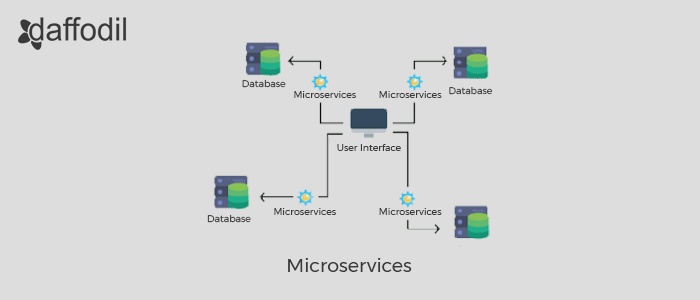
Just think of an eCommerce website that you last visited. You must have used the search bar of the site to look for the product you’re interested in. There must be some product recommendations for you, based on your last purchase. You might have added the product into cart and made payment to buy it.
In this eCommerce application, an individual process is a service. The search represents a service. The recommendations pulled from database of shopper preferences is a also a service. Yes, the payment module was another service that you used.
This modular software development approach, wherein, an application is built with independent group components is called Microservices. It is an architecture that run each application process as a service. Such an approach to building software applications makes it easy for app development team to accelerate development cycle, stay open to experimentation, reduce time to market for new features (even when the code base is huge).
Building Applications with Microservices: Benefits
Monolithic, Service-Oriented Architecture, and Microservices are three popular architectures for application development. However, brands, such as Netflix, Amazon, Soundcloud are switching to Microservices for their robust, scalable applications. Here are some of the reasons, why.
-
Microservices enables continuous delivery and deployment of large, complex applications. Since the services are small in size and independent of each other, their testing and deployment is easy and faster than other application architectures.
-
Building an app on Microservices architecture allows dividing the development effort into teams, which ultimately accelerates the development process. Each team can then develop, deploy, and scale their services independently.
-
Microservices are relatively small in size. Thus, it is easier for developers to understand the codebase, update it, and deploy it. Since the IDE is faster, it makes developers more productive.
-
One of the biggest advantages of Microservices is improved fault isolation. For example: a memory leak in one service will not affect another. Even though a service misbehaves or fail to respond well, rest of the services will keep receiving and responding to user requests.
-
Microservices architecture offers flexibility to try on different technologies (frameworks or languages) for building application services. When building a new service, a new technology stack can be chosen. Similarly, if major changes to a service has to be done, the entire service can be rewritten using a new technology stack.
When to go for Microservices Architecture?
-
New team members joining the app development team needs to quickly become productive.
-
You run multiple copies of the application on multiple machines in order to satisfy scalability and availability requirements.
-
The application demands continuous deployment with updates (bug fixes, features etc.)
-
When a team of developers is working on an application, who can independently work on individual functions or processes.
-
An application needs to utilize multiple/emerging technologies (framework, programming languages etc.) for development.
ALSO READ: Microservices vs Service-Oriented Architecture (SOA): Fundamental Differences
Build Scalable, Robust Applications with Microservices
Do you have an application built using monolithic or Service-Oriented Architecture? Do you want to switch your application architecture to Microservices? Setup a 30-minute free consultation with our tech-expert to know how to make this possible.



